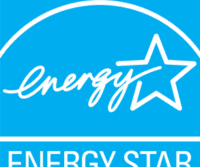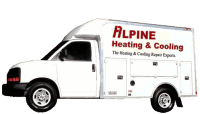
When it comes to managing home expenses, heating, ventilation, and air conditioning (HVAC) systems are significant contributors. Efficient HVAC systems not only ensure comfort but also help in reducing energy bills. For residents of Skagit County, Washington, there are several tax breaks and rebates available to make upgrading to energy-efficient HVAC systems more affordable.
Why Upgrade Your HVAC System?
Upgrading to an energy-efficient HVAC system has several benefits:
- Lower Energy Bills: Modern systems use less energy, translating into significant savings.
- Enhanced Comfort: Improved technology means better temperature regulation and air quality.
- Environmental Impact: Reduced energy consumption means a smaller carbon footprint.
- Increased Home Value: Energy-efficient homes are more attractive to potential buyers.
Five Federal HVAC Tax Credits
1. Energy-Efficient Home Improvement Credit
The federal government offers tax credits for homeowners who invest in energy-efficient improvements, including HVAC systems. As of 2024, you can claim up to 30% of the cost of a qualified HVAC installation, with a maximum credit limit set by the IRS. This credit covers the cost of the unit and installation.
How to Claim:
- Ensure the HVAC system meets the energy efficiency requirements set by the Energy Star program.
- Keep all receipts and manufacturer’s certification statements.
- File IRS Form 5695 when you do your taxes.
2. Residential Energy Efficient Property Credit
The federal government offers a tax credit for homeowners who install qualified energy-efficient property, including certain HVAC systems that use renewable energy sources. As of 2024, you can claim up to 26% of the cost of installing solar panels, solar water heaters, and other renewable energy HVAC systems.
How to Claim:
- Ensure the HVAC system meets the energy efficiency requirements set by the Energy Star program.
- Keep all receipts and manufacturer’s certification statements.
- File IRS Form 5695 when you do your taxes.
3. Nonbusiness Energy Property Credit
Homeowners can receive a tax credit for installing energy-efficient HVAC systems in their primary residences. This credit covers 10% of the cost of qualified energy-efficient improvements, including HVAC systems, up to a maximum of $500 for all years combined from 2006 to 2024.
How to Claim:
- Ensure the HVAC system meets the energy efficiency requirements set by the Energy Star program.
- Keep all receipts and manufacturer’s certification statements.
- File IRS Form 5695 when you do your taxes.
4. Geothermal Heat Pump Tax Credit
The federal government offers a tax credit for homeowners who install geothermal heat pumps. As of 2024, you can claim up to 26% of the cost of installing a geothermal heat pump, including labor costs for on-site preparation, assembly, and installation.
How to Claim:
- Ensure the geothermal heat pump meets the energy efficiency requirements set by the Energy Star program.
- Keep all receipts and manufacturer’s certification statements.
- File IRS Form 5695 when you do your taxes.
5. Small Wind Energy Property Credit
Homeowners can receive a tax credit for installing small wind energy systems, which can be used for heating or cooling purposes. As of 2024, you can claim up to 26% of the cost of installing a wind turbine system.
How to Claim:
- Ensure the wind energy system meets the energy efficiency requirements set by the Energy Star program.
- Keep all receipts and manufacturer’s certification statements.
- File IRS Form 5695 when you do your taxes.
Maximizing Savings with Puget Sound Energy Rebates for Heating

Get instant LED discounts on a variety of energy-saving Philips LEDs this fall. This offer is available at the Burlington, Washington Home Depot, from October 5 to November 29, 2019, while supplies last.
Philips LEDs for as low as 99 cents per bulb:
- A-lamp LED 4-pack for $3.96 (was $13.54, SKU: 1004632147)
- Reflector LED 3-pack for $2.97 (was $13.45, SKU: 1004632168)
- Candelabra LED 3-pack for $2.97 (was $10.55, SKU: 1004632158)
- 3-way A-lamp LED for $8.78 (was $11.28, SKU: 1001862035)
There’s an instant discount, rebate, or program for everyone and every home. Start saving today with these LED discounts and swap out your light bulbs!
Light Bulb Recycling
Did you know you can recycle incandescent and CFL bulbs for free in Skagit County? Visit these Skagit Recycling locations for quick and safe disposal of incandescent and CFL bulbs. CFL bulbs can also be recycled for free at Lowe’s in Mount Vernon and Home Depot in Burlington. There are also nearly 300 light bulb recycling collection boxes at select PSE offices, retails locations, city halls, and other locations. If you’re interested, you can host your bulb collection box!
Anacortes
- City of Anacortes
- Rosario Assisted Living
Burlington
- PSE: Skagit Service Center
- DC Health Chiropractic
La Conner
- La Conner Regional Library
Mount Vernon
- Alpine Ridge Retirement Apartments
- North Sound Mental Health
- Park Village 55+ Community
- Preview Properties
- Skagit Community Action Agency
- Skagit County Public Works
- Skagit Public Utility District
- Skagit Valley Food Co-op
Sedro-Wooley
- City of Sedro-Wooley
Bulb Recycling Facts
- Do not put used CFL bulbs in the garbage. CFL bulbs contain a tiny amount of mercury and will harm the environment if they are disposed of in landfills in large numbers.
- Recycled incandescent and CFL bulbs get broken down into their component materials. The glass can be used to manufacture other glass products or as a cement aggregate, while the metal is recycled as scrap. Recovered mercury is purified for reuse in industry or stored in properly permitted facilities.
- If a bulb breaks, the U.S. Environmental Protection Agency (EPA) offers detailed instructions for safe clean-up and disposal. Visit the EPA’s CFL information site for current clean-up instructions.

Get the most from your hard-earned energy dollars in Skagit Valley. Most of these tips will cost you nothing except a change in lifestyle habits.
Ensure proper airflow
Insulate ducts, change furnace filters and make sure vents and ducts flow freely.
Adjust thermostats
Set your thermostat to your personal comfort zone and when you are away from home, reduce the temperature by 5-8 degrees Fahrenheit. For homes with elderly people or children, warmer temperatures are recommended.
Install a programmable setback thermostat
This can be a good investment in homes heated and cooled with central forced-air systems. Taking the time to program to match your personal habits will save money.
Conserve water, while saving money and energy
Turn down your water heater to 120° F to reduce your heating bills, install low-flow shower heads and replace faucet washers, and take quick showers instead of baths.
When doing laundry…
Use cold water in your wash and rinse cycles. And, always run full loads of laundry instead of washing a few pieces of clothing at a time.
Check your dishwasher’s setting
Some dishwashers offer a water-saving setting or an energy-saving drying option. Check to see if your dishwasher has these options and start using yours today!
Use your drapes.
Close drapes on hot summer days to keep the heat outside. On winter days leave them open to absorb sunlight. Always close drapes at night to keep your home’s heat inside.
Use caulk and weather stripping
Both caulk and weather stripping offer inexpensive and efficient ways to lower your heating bill. They can keep out wind, moisture, dust, and noise.
Insulate your home
For an effective energy-saving investment, and for the greatest energy savings, consider adding insulation. Ceiling insulation can save up to 30 percent on fuel bills, depending on the R-value. Contact a qualified insulation contractor for costs on insulating ceilings, walls, and floor spaces.
Have your furnace serviced once a year
A tune-up inspection for your natural gas furnace is the best way to ensure your furnace is at peak operating efficiency. Contact Alpine Heat to schedule your tune-up!
Water heaters
Replace old water heaters with models that have a Uniform EnergyEnergy_Star Factor (UEF) rating of 0.65 or higher. For additional information on high-efficiency water heaters, check out the products on the ENERGY STAR® website at www.energystar.gov.
All of the above are helpful ideas you can do around your home to lower your gas bill.



